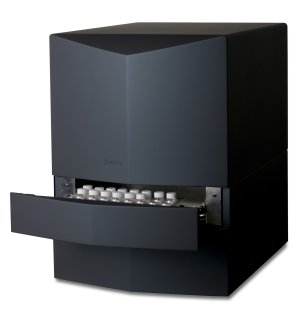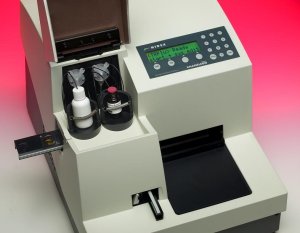Counters for liquid scintillation (and more) increase market share
08/02/2011

Researchers using liquid scintillation counting to measure radiation from beta-emitting nuclides are favouring instruments from LabLogic Systems in circumstances where versatility or a high degree of resolution is required.

LabLogic's multi-functional Chameleon microplate reader.
Many are investing in the Chameleon V microplate reader because alongside LSC it offers six non-radiometric measurement technologies that they can combine in whatever number and permutation suits their purposes - direct mode luminescence, filter mode luminescence, fluorescence intensity, fluorescence polarisation, time-resolved fluorescence and absorbance.
This makes the Chameleon the most sensitive and versatile microplate reader on the market; in fact its unique combination of dual PMT design and direct optics gives it a sensitivity for luminescence that is unequalled.
The revolutionary 300SL liquid scintillation counter uses Triple to Double Coincidence Ratio (TDCR) counting.
When the need is for LSC alone and resolution is the key consideration, it is the 300SL automatic liquid scintillation counter that usually gives best results. In one recent demonstration the instrument successfully counted dual-labelled 80:1 samples of C14:Tritium and Tritium:C14 that had defeated rival products; needless to say, the prospective customer went on to place an order.
This exceptional performance is achieved at a much lower whole-life cost than conventional LSC counters because the 300SL uses the ‘Triple to Double Coincidence Ratio’ absolute activity measurement method - the first instrument of its kind to do so. That means there is no need for a gamma source to compensate for the quench phenomenon for pure beta emitters, and therefore no costs associated with setting up the source, maintaining authorisation records, ensuring the counter's continuing safety and ultimately disposing of the source safely.